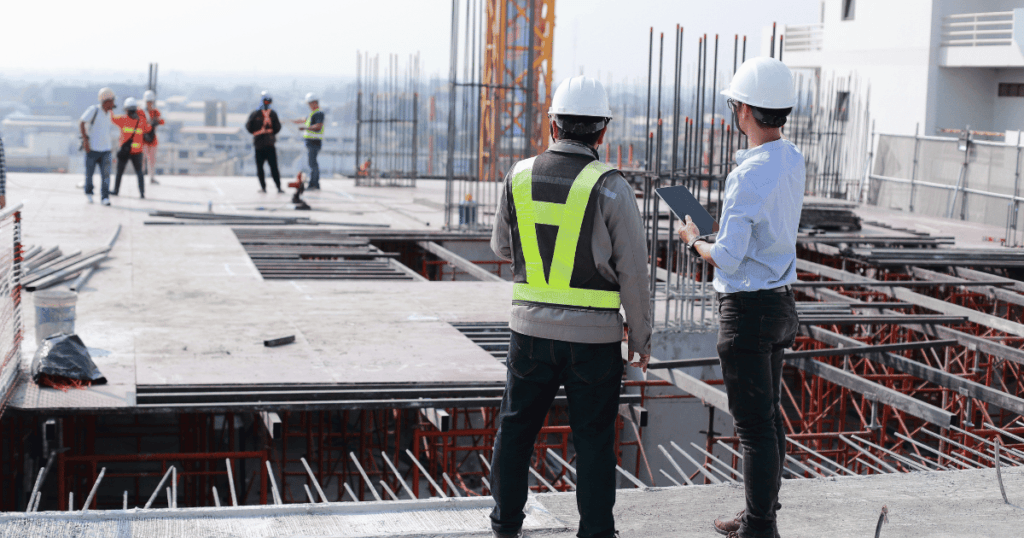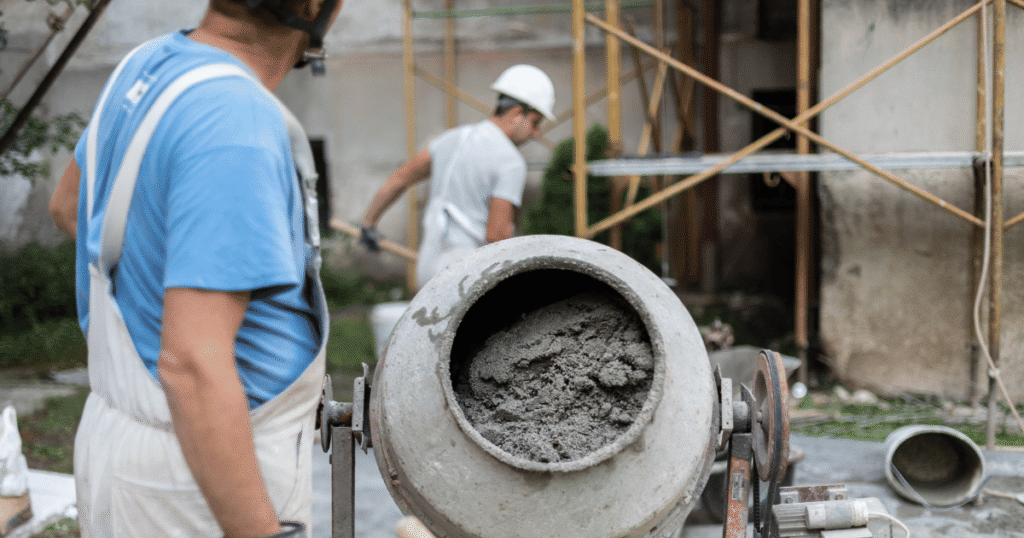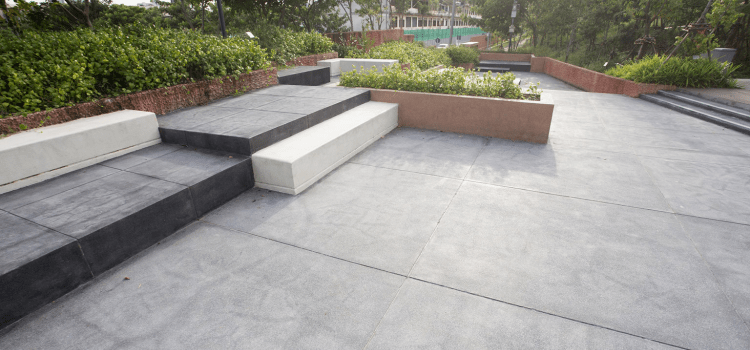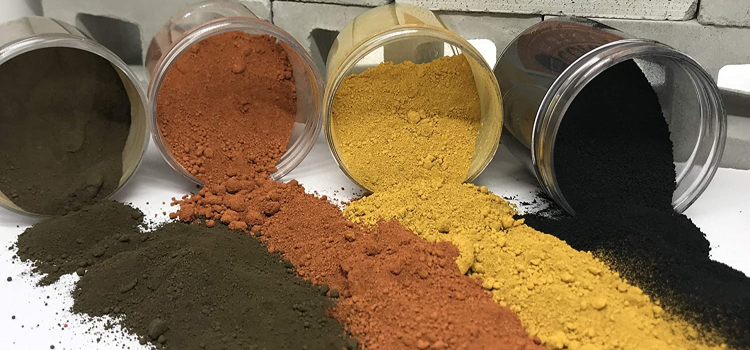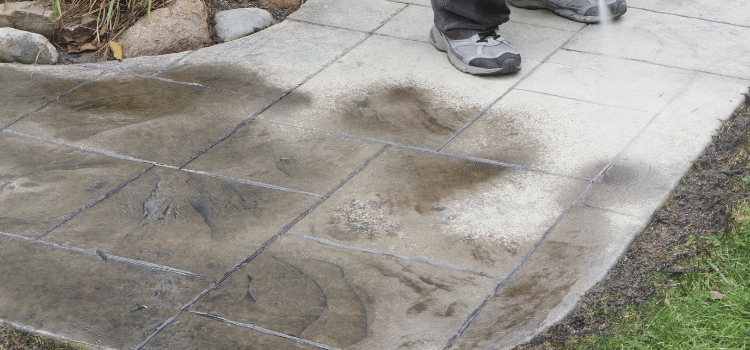If you’re involved in concrete work, you know it’s a tough business. Not only does it require skill and precision, but also a keen awareness of safety. That’s where Personal Protective Equipment, or PPE, comes into play.
I’m going to help you understand the need for such gear and why it’s not something to overlook.
Concrete work exposes workers to a range of hazards, from airborne silica dust that can damage the lungs, to the risk of abrasive injuries from handling rough materials. Without proper gear, you’re playing roulette with your well-being.
The reality is, that wearing protective equipment is just as vital as the concrete you pour. It acts as a barrier between you and the job’s inherent risks.
It’s not simply about donning a hard hat or throwing on a pair of gloves—it’s about maintaining a standard of safety that preserves your health.
Why Use Personal Protective Equipment For Concrete Work?

Personal Protective Equipment (PPE) is crucial in concrete work to safeguard workers against various hazards present in the construction environment.
Here’s a list of PPE commonly used in concrete work along with the associated hazards:
Hard Hats
- Hazard: Falling objects such as debris, tools, or materials from overhead construction activities.
Safety Glasses or Goggles
- Hazard: Eye injuries from flying debris, concrete splashes, or chemical exposure.
Respirators
- Hazard: Inhalation of dust, fumes, and toxic chemicals generated during concrete mixing, cutting, or grinding.
Ear Protection (Earplugs or Earmuffs)
- Hazard: Hearing damage from loud machinery and equipment used in concrete work, such as concrete saws or drills.
Gloves
- Hazard: Skin irritation, cuts, or chemical burns from handling concrete, rebar, or chemicals like concrete sealers or curing compounds.
Safety Boots
- Hazard: Foot injuries from heavy objects, punctures from sharp materials, or slipping on wet concrete surfaces.
High Visibility Clothing
- Hazard: Being struck by moving vehicles or equipment due to poor visibility on construction sites, especially during concrete pouring or finishing activities.
Fall Protection Equipment (Harnesses, Lifelines)
- Hazard: Falls from heights while working on elevated surfaces like formwork, scaffolding, or elevated concrete structures.
Protective Clothing (Coveralls, Aprons)
- Hazard: Skin irritation, chemical exposure, or contamination from concrete mixtures, curing compounds, or adhesives.
Knee Pads
- Hazard: Knee injuries from kneeling on hard concrete surfaces during tasks like concrete finishing or installation.
Using appropriate PPE not only helps prevent injuries and illnesses but also ensures compliance with safety regulations and promotes a safer work environment for everyone involved in concrete construction projects.Shous
Key Components of Protective Equipment for Concrete Professionals

I’m going to walk you through the gear that’s non-negotiable when you’re knee-deep in concrete work. Think of this as your armory against the perils of the job.
First up, let’s talk about your hands.
Gloves are paramount. But not just any gloves – you need ones resilient enough to handle abrasive materials and chemicals without making you lose your grip.
Now, protecting your noggin is a no-brainer. A hard hat not only safeguards against impact but also serves as a barrier from the sun and, sometimes, wayward splashes of concrete.
Don’t forget those toes!
Rugged steal-toed safety boots with puncture-resistant soles are a must. They’ll keep you steady on your feet while protecting you from the ground up.
In my opinion, the silent hazard in concrete work is the fine dust particles. That’s why having the right respiratory equipment isn’t optional.
Masks and respirators keep those pesky dust particles out of your lungs, notably when cutting or mixing concrete.
I really hope that you recognize the importance of eye protection, too.
Anti-fog, impact-resistant goggles can be the difference between a good day and an urgent trip to the eye doctor.
And lastly, your skin is your largest organ, so protect it with long-sleeve shirts and pants that are breathable yet resistant to concrete’s abrasive nature.
Now you’re probably wondering how to pick the perfect set of armor from this broad array. That’s going to include understanding how to zero in on the features that offer you the most bang for your buck while keeping you safe. So let’s move on and find out about selecting the right protective equipment for your concrete work needs.
Choosing the Right Protective Equipment for Your Needs

When it comes to gearing up for concrete work, don’t just settle for the basics – go for gear that not only gets the job done but is tailor-made for your unique needs. Let’s dive into the key factors that should be on your radar!
Assessing Quality:
Your gear should be more than just sturdy and durable; it should be your dependable ally when things get intense.
Choose equipment that won’t let you down when it’s crunch time. But hey, it’s not just about toughness; it’s about finding the perfect fit and comfort. Because let’s face it, if it’s not comfortable, you’re not going to wear it.
Price Tag Wisdom:
Sure, it’s tempting to cut costs and go for the cheapest options, but your safety is priceless. Investing a bit more upfront can save you in the long run.
Look for that sweet spot where cost and quality intersect, ensuring the best value for your hard-earned money.
Standards Matter:
Protective equipment for concrete work isn’t just a suggestion – it’s regulated by standards.
Whether it’s international benchmarks from the ISO or local regulations, ensure your gear meets or exceeds these standards. Compliance isn’t just a legal checkbox; it’s your peace of mind, knowing your equipment is rigorously tested and approved.
Evolutionary Gear:
Your protective gear should be as dynamic as you are and adapt to your evolving work environment.
Stay ahead of the game by being open to changing your gear as new technologies and materials emerge. Your goal? Embrace the evolution for better protection and enhanced comfort.
Gear up smart, stay safe, and keep pushing boundaries!
Maintenance and Care for Long-Lasting Protective Equipment

I’m here to help you with some game-changing advice on maintaining your protective equipment.
It’s not just about having the right gear; it’s about keeping it in top condition. Remember, well-maintained PPE can be the difference between a close call and an injury.
With concrete work, your equipment goes through a lot. That’s why regular upkeep is crucial. I’ll guide you through best practices for the maintenance and storage of protective gear.
Simple steps like cleaning your gear after use, checking for damage, and storing it properly can significantly extend its life.
Maintaining Personal Concrete Protection Equipment
Inspect Regularly:
- Hard Hats: Check for cracks, dents, or signs of wear. Ensure the suspension system is intact.
- Safety Glasses or Goggles: Inspect for scratches, cracks, or any damage that may impair visibility.
- Respirators: Examine straps, valves, and filters regularly. Replace filters as per manufacturer recommendations.
- Ear Protection: Ensure earplugs or earmuffs are clean and free from damage.
Clean Properly:
- Hard Hats and Safety Glasses: Wipe down with a mild soap solution and water. Avoid using harsh chemicals that may damage the materials.
- Respirators: Clean surfaces with a damp cloth and follow manufacturer instructions for proper disinfection.
- Ear Protection: Clean earplugs or earmuffs with mild soap and water. Replace disposable earplugs as needed.
Store Correctly:
- Hard Hats: Store in a cool, dry place away from direct sunlight. Avoid hanging them on pegs for an extended period.
- Safety Glasses or Goggles: Store in a protective case or pouch to prevent scratches.
- Respirators: Store in a clean, dry area, preferably in a protective case or bag to prevent contamination.
- Ear Protection: Keep earplugs or earmuffs in a clean container or pouch when not in use.
Replace Damaged Parts:
- Hard Hats: Replace suspension systems if damaged, and replace the entire hard hat if it shows signs of cracks or significant wear.
- Safety Glasses or Goggles: Replace if there are scratches on the lenses that affect visibility.
- Respirators: Replace damaged or worn-out parts according to the manufacturer’s guidelines.
- Ear Protection: Replace earplugs or earmuffs if they are damaged or no longer provide a snug fit.
Follow Manufacturer Guidelines:
- Always adhere to the manufacturer’s instructions for maintenance and care.
- Pay attention to recommended replacement intervals for disposable components.
Training and Education:
- Ensure workers are trained on the proper care and maintenance of their specific PPE.
- Encourage a culture of responsibility where workers take ownership of their PPE maintenance.
By following these steps and incorporating a routine maintenance schedule, you can extend the life of your concrete protective equipment and ensure that it continues to provide optimal protection on the job.
Personal Protective Equipment For Concrete Work Conclusion
In conclusion, the careful selection and maintenance of Personal Protective Equipment (PPE) are critical for the safety of workers in concrete work. Each piece, from hard hats to safety glasses and respirators, plays a vital role in protecting against specific construction hazards.
Balancing quality, comfort, and cost is key, with the understanding that investing in reliable PPE is an investment in both safety and long-term savings. Compliance with safety standards is non-negotiable, ensuring that equipment meets rigorous benchmarks.
Regular inspection, proper cleaning, and adherence to storage practices contribute to the effectiveness and durability of PPE. Embracing advancements in technology and materials is essential for staying ahead of emerging risks.
In essence, Personal Protective Equipment is more than tools – it’s a commitment to a safety culture. By prioritizing careful selection, diligent maintenance, and adaptability, we empower workers in concrete construction to face challenges confidently and resiliently.


